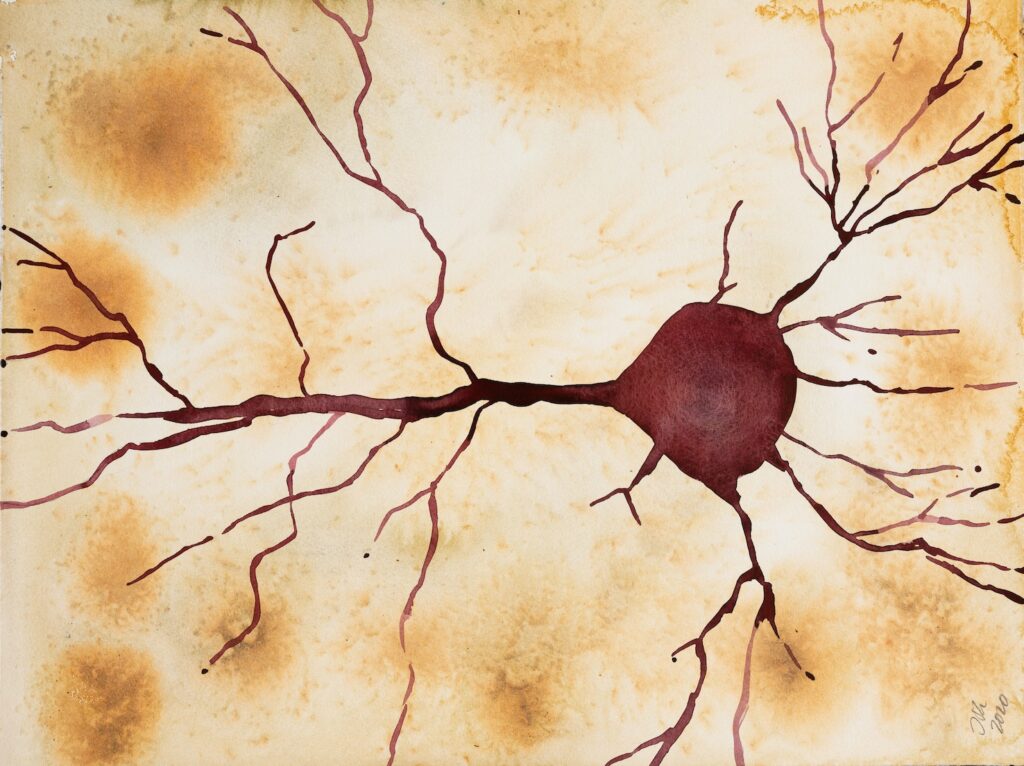Cortical neurons

Biorelevant culture of cortical neurons on Biolaminin substrates
Laminins are important for cortical neuron development
Laminins are key extracellular matrix proteins, expressed primarily in the basement membrane associated with the pia mater of the cerebral cortex and in the ventricular zone, subplate, and marginal zone of the developing cerebral wall. Several different laminin isoforms that contain the β2 and γ3 chains, such as laminin 521, have been isolated from the brain, underlining their indispensable role in CNS function (Radner, 2012). For example, β2 and γ3 chain laminins are pivotal for a functional cortical pial basement membrane to which Cajal Retzius and radial glial cells attach. Defects in their expression have been linked to cortical laminar disorganization (Radner, 2012). In addition, the knockout of laminin γ1 in the cerebral cortex leads to defects in neuritogenesis and neuronal migration (Chen, 2009).
Laminin-integrin interaction is crucial for development, function, organization, and polarization
Interaction of laminins with β1 integrin receptors is crucial not only for axon initiation and development but also for the cytoskeleton remodeling occurring during neuronal polarization (Lei, 2012; Nasu, 2012). Cortical abnormalities have been linked to transgenic α6β1 and α3β1 receptors (Colognato, 2005), both key receptors of laminin 111, 211, 511, and 521.

Biolaminin substrates support the long-term culture of cortical neurons
Apart from controlling neurite development, laminins also guide axons of single multipolar cortical neurons in vitro and serve as a good model for mimicking the in vivo protein gradient conditions involved in creating defined neural networks during CNS development (Fricke, 2011). Human recombinant Biolaminin 521 and Biolaminin 211 substrates from BioLamina have been shown to provide excellent support for the long-term culture (>80 days) of human primary cortical neurons (unpublished data). In addition to laminin 521 and laminin 211, laminin 111 also allows both firm attachment and extensive neurite outgrowth and induction of Synapsin I expression in primary cortical neurons (Savettieri, 1998). Laminin-211 was shown to increase basal progenitor proliferation in the mouse neocortex (Güven et al. 2020).
Biolaminins support human PSC differentiation into neocortical neural stem cells and cortical neurons
The differentiation of hPSC-derived cortical cultures on defined human recombinant Biolaminin 521 (LN521) substrates was reported to be repeatable and resulted in the generation of cortical neurons that formed functionally active networks (Hyvärinen et al. 2019). The hPSC-derived networks developed synchronous activity, which involved glutamatergic and GABAergic inputs, recapitulating the classical cortical activity also observed in rodent counterparts. Principal component analysis (PCA) based on spike rates, network synchronization, and burst features revealed the segregation of hPSC-derived and rat network recordings into different clusters, reflecting the species-specific and maturation state differences between the two networks. Overall, hPSC-derived neural cultures produced with a defined protocol generate cortical type network activity, which validates their applicability as a human-specific model for pharmacological studies and modeling network dysfunctions.
Succeed with your application
-
Instructions 001: Coating with Biolaminin substrates
Protocol and concentration calculations for coating cultureware with Biolaminin
Open pdf - Other10/06/2021
Quality documents
Quality documents Quality certifications ISO 9001 certificate Safety data sheets Biosilk (BS)Biosilk
-
Application note 016: Biosilk 3D biomaterial for organoid culture
Features and supporting data for Biosilk in 3D cell culture
Open pdf
Biolaminin Key Advantages
Laminin isoforms 521, 211, and 111 play a major role in neurite initiation, growth and subsequent maturation of cortical neurons in vitro. Biolaminins 521 and 211 support long-term culture of primary human cortical neurons, whereas Biolaminin 111 promotes formation and stabilization of continuous cortical neuroepithelium from mESCs.
Specific laminin isoforms are present in different tissue microenvironments and are essential for cell survival, proliferation, and differentiation. Biolaminin products allow you to imitate the natural cell-matrix interactions in vitro.
Our products have consistent composition and quality. This enables minimized variability between experiments and uniform pluripotency gene expression profiles between different cell lines.
All our matrices are chemically defined and animal origin-free, which makes them ideal substrates for each level of the scientific process – from basic research to clinical applications.
Numerous scientists have found our products and finally succeeded in their specific stem cell application. The power of full-length laminins incorporated into various cell systems is well documented in scientific articles and clinical trials.
Recommended products

Biolaminin 521 LN (LN521)
Human recombinant laminin 521
Biolaminin 521 LN is the natural laminin for pluripotent stem cells and therefore reliably facilitates self-renewal of human ES and iPS cells in a chemically defined, feeder-free and animal origin-free stem cell culture system. LN521 is animal origin-free to the primary level.View product
Biolaminin 211 LN (LN211)
Human recombinant laminin 211
Biolaminin 211 supports the growth, survival, and differentiation of a wide range of tissue-specific cell types, including motor neurons, cardiac cells, and skeletal muscle cells.View product
Biolaminin 111 LN (LN111)
Human recombinant laminin 111
Biolaminin 111 is commonly used as a general attachment protein for many cell types in vitro.View product

Talk to our team to get a custom proposal
We are here to help you in your journey.